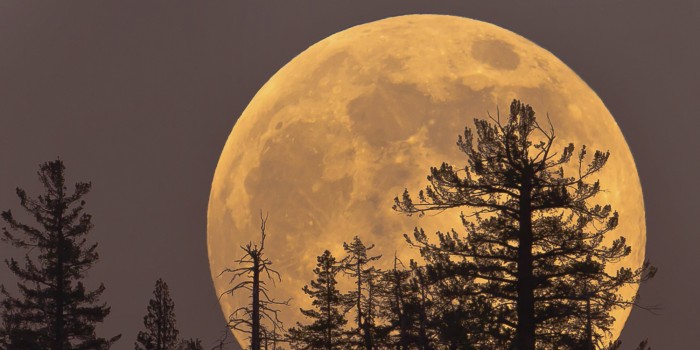
September promises lots of exciting night sky activity – ideal for camping and stargazing. The first half of this month will bring us great views of Mercury and Neptune, a new moon, and a partial eclipse! During the latter half of the month, the September (autumnal) Equinox occurs, and the fall Supermoon – also known as the Harvest Moon. Perhaps most exciting of all – a total lunar eclipse for North America at the end of the month.
- September 4 – Mercury at Greatest Eastern Elongation. The planet Mercury reaches greatest eastern elongation of 27 degrees from the Sun. This is the best time to view Mercury since it will be at its highest point above the horizon in the evening sky. Look for the planet low in the western sky just after sunset.
- September 13 – New Moon. The Moon will located on the same side of the Earth as the Sun and will not be visible in the night sky. This phase occurs at 06:41 UTC. This is the best time of the month to observe faint objects such as galaxies and star clusters because there is no moonlight to interfere.
- September 13 – Partial Solar Eclipse. A partial solar eclipse occurs when the Moon covers only a part of the Sun, sometimes resembling a bite taken out of a cookie. A partial solar eclipse can only be safely observed with a special solar filter or by looking at the Sun’s reflection. The partial eclipse will only be visible in southern Africa, Madagascar, and Antarctica. (NASA Map and Eclipse Information)
- September 23 – September Equinox. The September equinox occurs at 08:21 UTC. The Sun will shine directly on the equator and there will be nearly equal amounts of day and night throughout the world. This is also the first day of fall (autumnal equinox) in the Northern Hemisphere and the first day of spring (vernal equinox) in the Southern Hemisphere.
- September 28 – Full Moon, Supermoon.
 The Moon will be located on the opposite side of the Earth as the Sun and its face will be will be fully illuminated. This phase occurs at 02:50 UTC. This full moon was known by early Native American tribes as the Full Corn Moon because the corn is harvested around this time of year. This moon is also known as the Harvest Moon. The Harvest Moon is the full moon that occurs closest to the September equinox each year. This is also the second of three supermoons for 2015. The Moon will be at its closest approach to the Earth and may look slightly larger and brighter than usual. This will be the closest full moon of the year.
The Moon will be located on the opposite side of the Earth as the Sun and its face will be will be fully illuminated. This phase occurs at 02:50 UTC. This full moon was known by early Native American tribes as the Full Corn Moon because the corn is harvested around this time of year. This moon is also known as the Harvest Moon. The Harvest Moon is the full moon that occurs closest to the September equinox each year. This is also the second of three supermoons for 2015. The Moon will be at its closest approach to the Earth and may look slightly larger and brighter than usual. This will be the closest full moon of the year. - September 28 – Total Lunar Eclipse. A total lunar eclipse occurs when the Moon passes completely through the Earth’s dark shadow, or umbra. During this type of eclipse, the Moon will gradually get darker and then take on a rusty or blood red color. The eclipse will be visible throughout most of North and South America, Europe, Africa, and western Asia.
